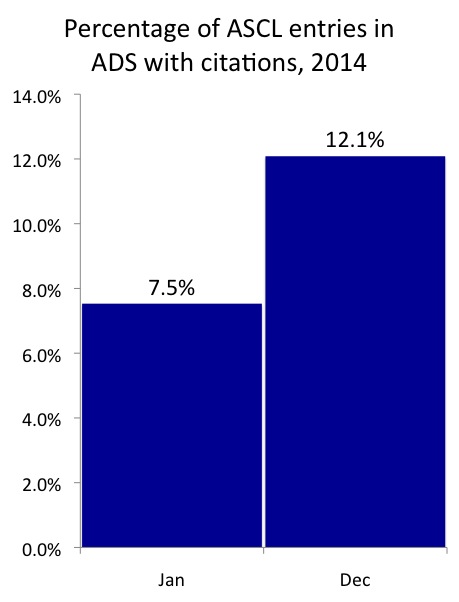Sixteen codes were added to the ASCL in January 2015:
BIANCHI: Bianchi VIIh Simulations
Colossus: COsmology, haLO, and large-Scale StrUcture toolS
DECA: Decomposition of images of galaxies
dst: Polarimeter data destriper
Enrico: Python package to simplify Fermi-LAT analysis
Colossus: COsmology, haLO, and large-Scale StrUcture toolS
DECA: Decomposition of images of galaxies
dst: Polarimeter data destriper
Enrico: Python package to simplify Fermi-LAT analysis
Exoplanet: Trans-dimentional MCMC method for exoplanet discovery
Exorings: Exoring modelling software
GalPaK 3D: Galaxy parameters and kinematics extraction from 3D data
LP-VIcode: La Plata Variational Indicators Code
Molecfit: Telluric absorption correction tool
NIGO: Numerical Integrator of Galactic Orbits
PsrPopPy: Pulsar Population Modelling Programs in Python
PynPoint: Exoplanet image data analysis
PythonPhot: Simple DAOPHOT-type photometry in Python
python-qucs: Python package for automating QUCS simulations
transfer: The Sloan Digital Sky Survey Data Transfer Infrastructure



